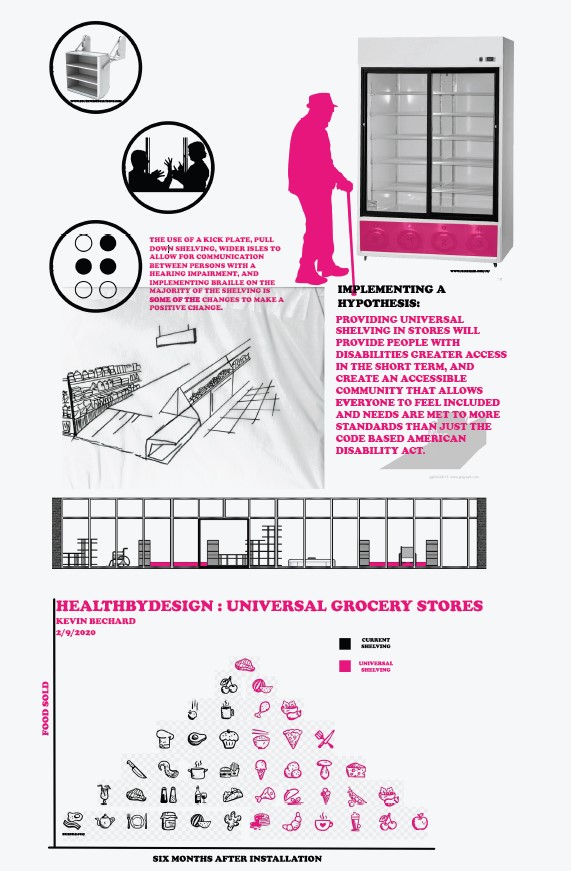︎ Universal Grocery Stores
Inclusive shopping design
By Kevin Bechard︎


Hypothesis
Providing accessible shelving (X) in stores (Y) will provide people with disabilities great access (Z1) in the short term, and create an accessible community that allows everyone to feel included and needs are met to more standards than just the code based American Disability Act (Z2) in the long-term.
Providing accessible shelving (X) in stores (Y) will provide people with disabilities great access (Z1) in the short term, and create an accessible community that allows everyone to feel included and needs are met to more standards than just the code based American Disability Act (Z2) in the long-term.
- What/ Why?
To measure the rate of success of this design outcome would be challenging and could potentially provide to exoticize community
members of the grocery store. The store will need to develop a system where they will count the number of items sold in certain areas of the store with the universal design elements in place.
- How?
To measure the rate of success of this design outcome could be challenging and could potentially show disabilities as a struggle and showcase the community members of the grocery store as being different. When they themselves do not believe this to be the case. The store will develop a system where they will count the number of items sold in certain areas of the store with the universal designed elements in place.

The design outcomes.
Design to Outcomes
The use of a kick plate, pull down shelving, wider isles to allow for communication between persons with a hearing impairment, and implementing braille on the majority of the shelving is some of the changes to make a positive change.
︎
Works Cited
1. ROB IMRIE & MARION KUMAR (1998) Focusing on Disability and Access in the Built Environment, Disability & Society, 13:3, 357-374, DOI: 10.1080/09687599826687
2. Huss Pace, M. G. (2006). Preferences for universal design features in apparel retail stores by older female apparel customers (Order No. 3226317). Available from Dissertations & Theses @ CIC Institutions; ProQuest Dissertations & Theses Global. (305304086). Retrieved from https://proxy.lib.umich.edu/login?url=https://search.proquest.com/docview/305304086?accountid=14667
3. Danielle Toronyi (2019) Hidden geographies: design for neurodivergent ways of hearing and sensing, Cities & Health, DOI: 10.1080/23748834.2019.1627059